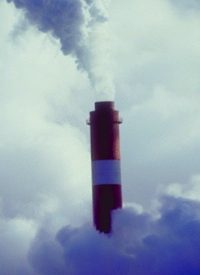
The EPA has announced plans to curb smog-causing pollutants for the sake of the health of millions of Americans. The proposals would increase costs to industry and local governments dramatically, as reported in Friday’s New York Times.
The Obama administration’s plan is strengthen the standards set under the Bush administration in 2008 that have been criticized as "too weak to adequately protect human health and the environment." The new rule changes the cap for ground-level ozone from 0.075 parts per million (ppm) emitted during any eight-hour period to between 0.060 and 0.070 ppm, to be gradually implemented between now and 2030. (The limit set in 1997 by the Clinton Administration was 0.084 ppm.) The new standard also includes seasonal variations intended to protect vegetation.
The cost to manufacturers, utilities, and oil refiners is estimated to be $19 billion to $90 billion annually by 2020, but the EPA claims that over that same time period the benefit to people’s health will amount to between $13 billion and $100 billion per year. Its analysts say the effects of heart and lung disease will be greatly diminished once the stricter limits are imposed. "EPA is stepping up to protect Americans from one of the most persistent and widespread pollutants we face. Smog in the air we breathe poses a very serious health threat, especially to children and individuals suffering from asthma and lung disease," said EPA Administrator Lisa Jackson in a news release.
The EPA calls smog "ground-level ozone" and explains it forms when industrial emissions of nitrogen oxide and petroleum fumes react with radiation from the sun. The agency reached its new standards based on "a review of the science that guided the 2008 decision, including more than 1,700 scientific studies and public comments from the 2008 rulemaking process." Research from the EPA’s Clean Air Scientific Advisory Committee also played a significant role in setting the new limits.
The New York Times reports that nearly 50 percent of the counties that monitor ozone levels are out of compliance with Bush administration standards, but under the 0.070 ppm cap more than 76 percent would be in violation. "Penalties for noncompliance include fines and loss of federal highway financing."
Waco, Texas, is one city likely to run into trouble with the new EPA standard, and community leaders are concerned about its effects. The Waco Tribune reports that the city, with a population less than 125,000 and a median household income less than $50,000, will likely receive a "nonattainment" classification when the rule is implemented, meaning its emissions would fall outside the acceptable threshold. Bill Clifton, head of the Waco Industrial Foundation, is concerned the status would negatively impact the city’s industrial recruitment efforts. The city has until July 2011 — when new nonattainment areas are designated — to decrease its ozone emissions and avoid nonattainment status.
Meanwhile, Texas Governor Rick Perry, an outspoken critic of the EPA, and the Texas Commission on Environmental Quality, have strongly denounced the ruling. The Waco Tribune quotes Perry as saying the decision is based on "flawed science" and predicts it will increase unemployment "while doing nothing more to improve human health." The article also quortes state Sen. Kip Averitt of Waco saying, "Those of us who are interested in protecting our environment are deeply engaged in this process, but it is important to note that a low number could produce the kind of economic fallout that brings to mind the federal government’s continuing, overreaching tinkering with issues that should belong to our state."
The EPA plans three public hearings on the new proposal and a 60-day public comment period. The hearings will be February 2 in Arlington, Virginia, the same date in Houston, Texas, and February 4 in Sacramento, California.



